DIAL IN PRECISION PERFORMANCE
Tuning your car to track conditions can mean the difference between winning a race to even making the Top 10. It’s an important aspect and there’s a lot of information both in print and on the web on how to tune your car. Most of the information, however, pertains to offroad buggies, truck and touring cars. That’s great, but what about the pan cars or, in the case of this article, F1 cars? While the general idea is the same, making those changes can be quite different compared to cars with independent suspension systems. We’re going go over a few main tuning features and how they’re attained in the F1 world. One thing to note; there are a few major brands out there of F1 cars; Tamiya, Serpent, Yokomo to name a couple. While they’re all pretty much the same, the tuning function itself might vary slightly. We’ll be using Serpent’s F110 F1 car for this article. Read on!
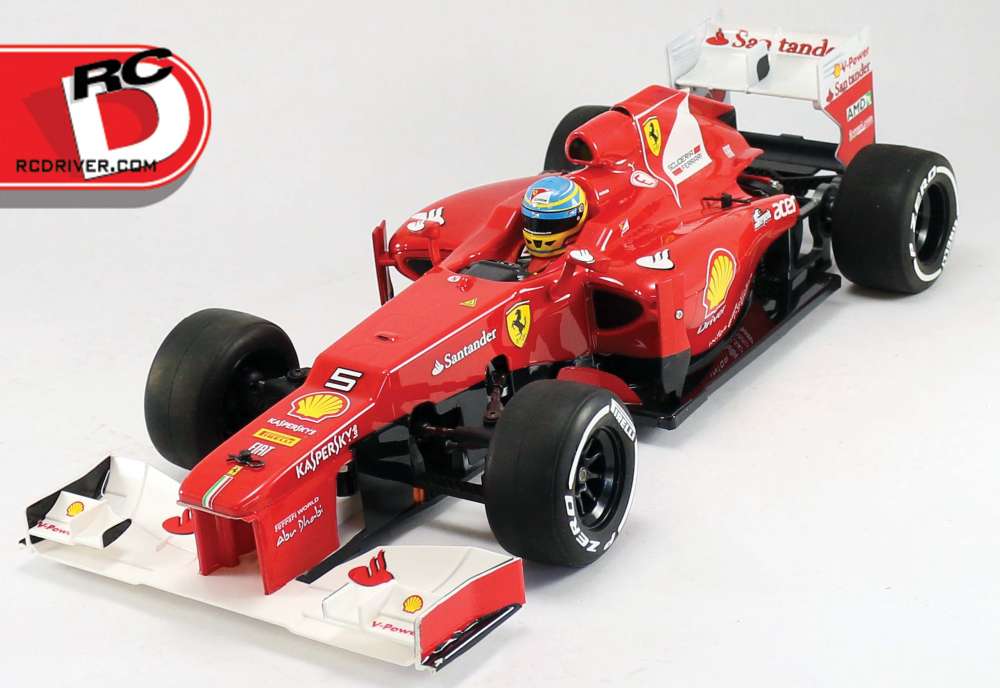
IMPROVED STEERING
Most F1 cars come with a Trailing Axle design, that is, the axle is mounted behind the kingpin. This gives a nice, smooth steering feel and is what most drivers use on carpet or high-traction surfaces. Want a more aggressive steering feeling? Switch over to an Inline Axle, that is, the axle is now mounted inline with the kingpin. This will increase the aggressiveness throughout the entire steering range.
RIDE HEIGHT
Like other RC cars, ride height can be changed individually from front to back. It can be used to adjust for bumpy conditions or tuning your car for more or less steering or rear traction. Changing the ride height in F1 cars is a bit different. For the front, you need to raise or lower the entire axle area via shims. Picture 1 shows an orange block under the steering; other cars use shims on the kingpin – same idea. The axle in the rear slides through bearings mounted in oval or circular plastic inserts. These inserts press into the rear bulkhead. As you can see in Picture 2, the axle is mounted up high; different inserts allow you to adjust ride height.
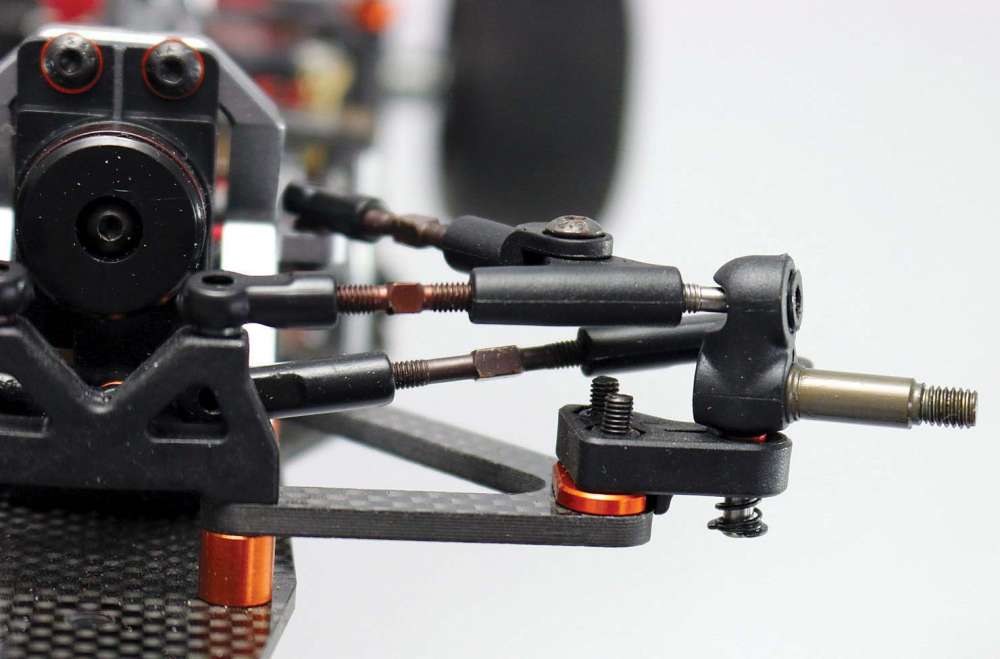
WEIGHT DISTRIBUTION
Changing the location of weight on your F1 car can also changes the steering or rear grip. When you accelerate (or brake), the weight of your car can ‘shift’; more weight to the rear causes more shift. That weight shift can cause a ‘lightening’ of the rear, loading the front end and causing an aggressive feeling. If you’re using a shorty LiPo pack (why wouldn’t you be?), you can adjust where this pack sits in the middle of your car. This is one tuning adjustment many people forget to take advantage of; it’s an easy adjustment and can make a huge impact on handling.
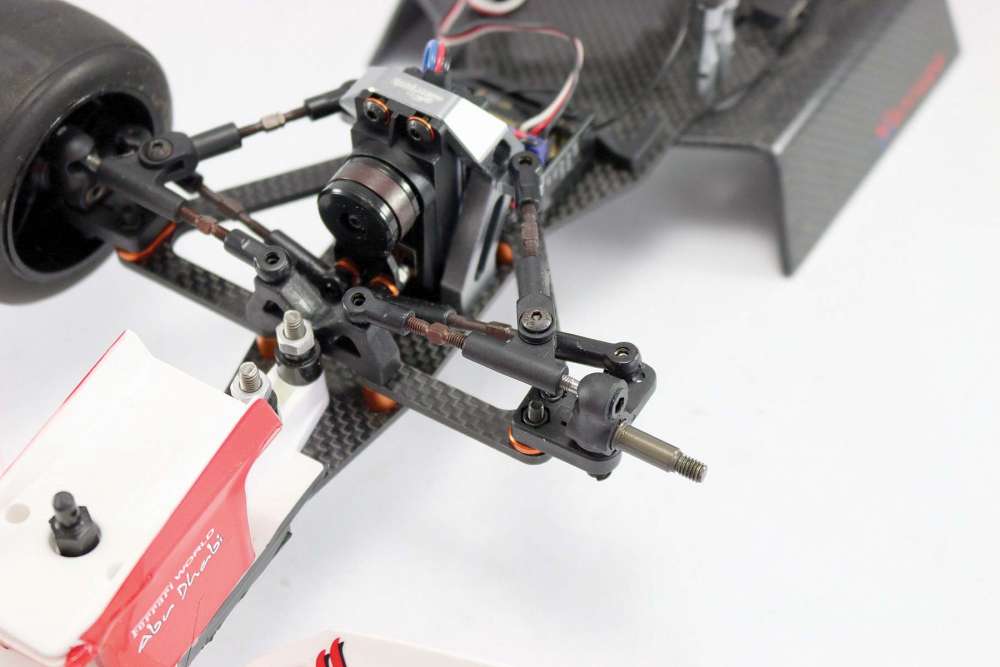
CAMBER
Camber is used to adjust the top angle of the front wheels and is usually altered using turnbuckles. More camber means the top of the tires are angled in; less camber means the tires are more up-and-down. As a car rolls through a corner, the chassis rolls as well, causing the tires to lean over. At 0 camber, a heavily cornering car will roll over onto the sidewall of the tire – not good. You want to adjust the camber in 1 or 2 degree increments to that your outside tire sits flat at full cornering. There is a fine line here as each time your car corners the tire angle is different, so you’ll have to do some testing to find the right angle. On the rear, unfortunately, camber is not available.
DAMPING
F1 cars don’t use shocks like other RC cars, so altering the spring and damping is quite a bit different. On the front, most F1 cars use a spring mounted over the kingpin. It is held in place by a C-clip, so changing these out is pretty straightforward. Changing the spring can make the front end softer or harder depending on track conditions. Without a proper shock, however, altering the damping is a little different. Using a preferred viscosity, liberally coat the front kingpin, adding friction to the steering knuckle as it moves up and down. The rear is a bit different. Since we’re not working with an independent suspension (it’s similar to a solid-axle setup), we can alter quite a few different areas; the center shock, damper post and side springs. The damper post is similar to the front suspension – adding different viscosity fluid will speed up or slow down its movement. The side springs can be changed (if your car has them); softer springs for more roll, heavier springs for less roll. The center shock is used mostly for damping the up or down motion of the rear pod – the same rules apply here. Some cars might have a T-bar setup. This is a fiberglass plate under the car that control the side-to-side movement. It’s an older design but it still used by some racers today. Basically, using a softer T-bar will allow more roll, a stiffer T-bar provides less roll. As a general note, lighter oil will add a more responsive feel and works best on bumpy tracks, heavier oil will make your car a little more sluggish and is best for smoother tracks.
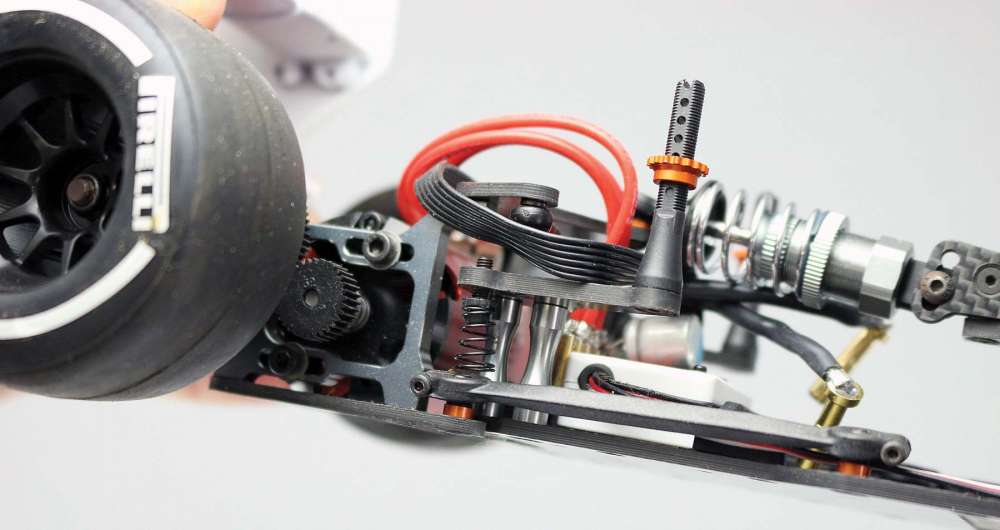
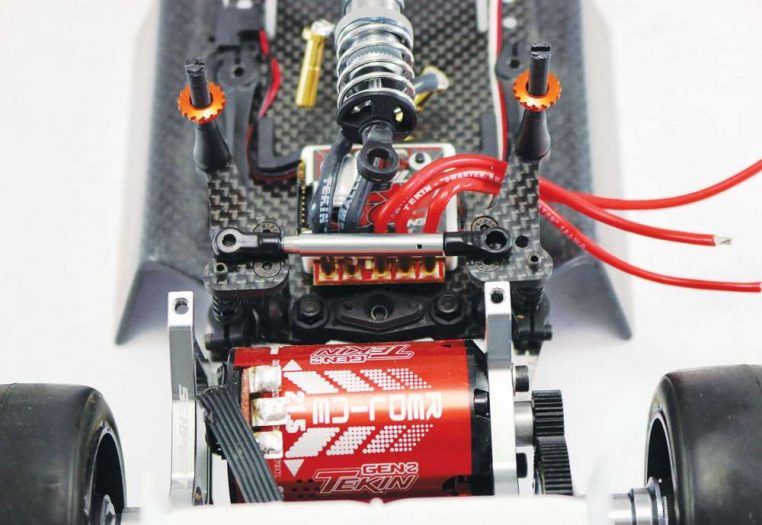
DIFFERENTIAL
The differential on F1 cars is probably one of the most important handling parts. It regulates slip on acceleration and needs to be adjusted to every track condition. Setting it for a carpet track can have detrimental effects on a looser outdoor track. On top of that, you should make sure it is ALWAYS in perfect working condition. The moment you start to feel it getting gritty, rebuild it. A gritty diff can kill performance, resulting in a very bad racing experience.
TOE
Toe refers to the in or out angle of the front tires; the rear toe is set at 0 degrees. While most drivers like the stability of 0 degrees or even a little negative toe, it’s been a wildly common thing to run as much as 3 degrees of front toe! On smooth tracks, toe out provides a lot of entry corner steering, allowing the car to get into a corner much faster on high-traction surfaces.
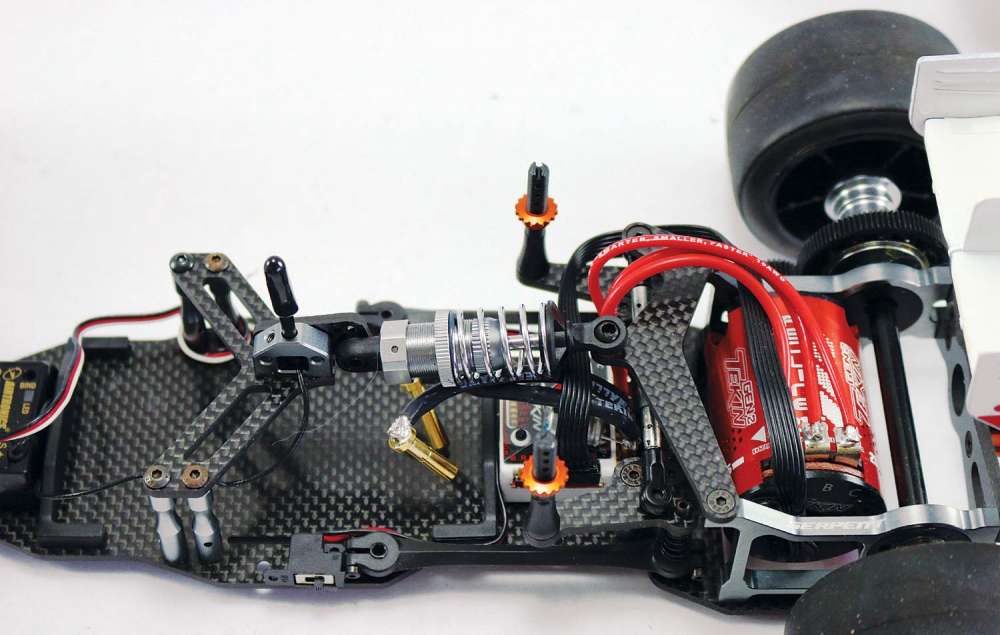
TRACK WIDTH
Depending on your rules, F1 cars can only be 190mm wide. That being said, there might be a little wiggle room depending on your car and the tires you’re running. Spacing the front out wider will reduce a little of the front grip your car has as well as slows down the steering response. This also helps to reduce traction rolling. Increasing the rear width ups the rear grip and also helps reduce traction rolling. Just be careful not to go to wide.
So there you have it, some quick and easy rules to get you started in tuning your F1 car. Now, I have to add that these are general rules – depending on your starting setup (or tuning options), you mileage may vary. But at least you’ll have some starting knowledge to go by when you hit the track. Good luck and happy F1’ing!
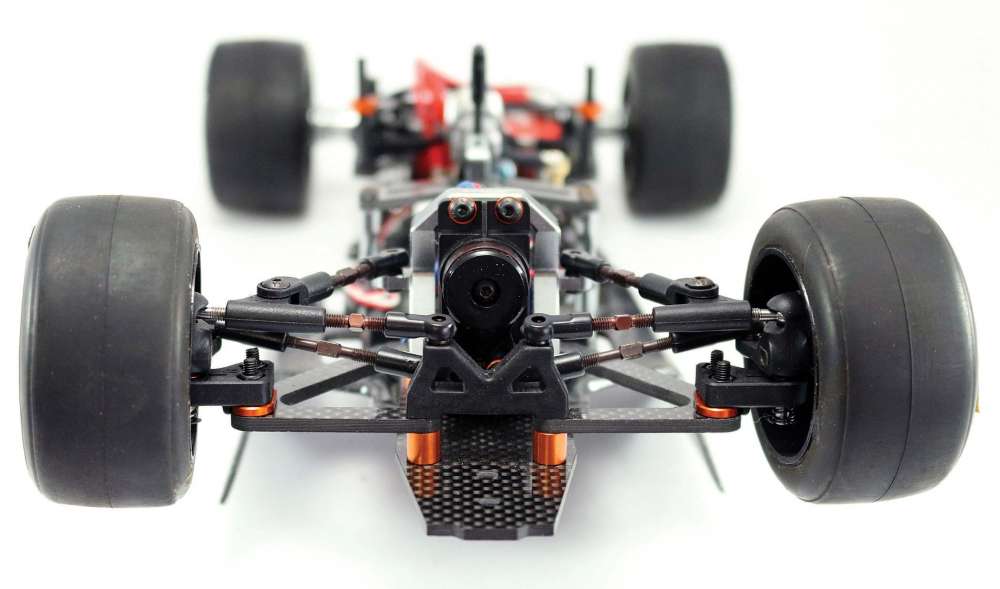
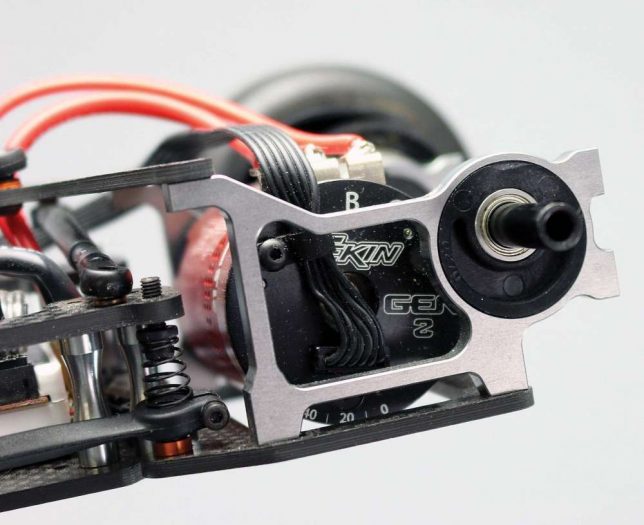
 RC Driver The Best In RC Car & Truck News, Reviews & Video
RC Driver The Best In RC Car & Truck News, Reviews & Video 







